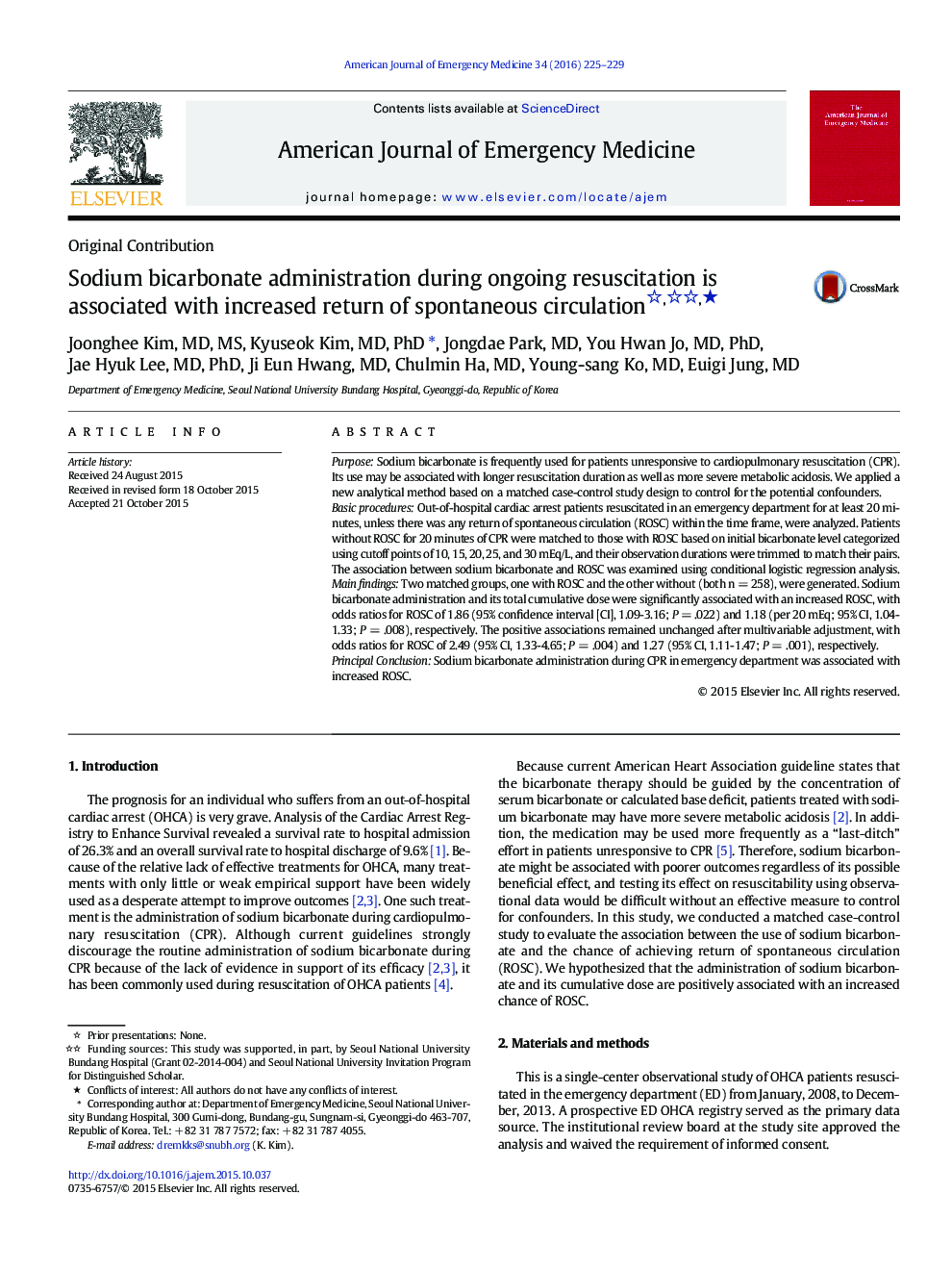| Article ID | Journal | Published Year | Pages | File Type |
|---|---|---|---|---|
| 3223214 | The American Journal of Emergency Medicine | 2016 | 5 Pages |
PurposeSodium bicarbonate is frequently used for patients unresponsive to cardiopulmonary resuscitation (CPR). Its use may be associated with longer resuscitation duration as well as more severe metabolic acidosis. We applied a new analytical method based on a matched case-control study design to control for the potential confounders.Basic proceduresOut-of-hospital cardiac arrest patients resuscitated in an emergency department for at least 20 minutes, unless there was any return of spontaneous circulation (ROSC) within the time frame, were analyzed. Patients without ROSC for 20 minutes of CPR were matched to those with ROSC based on initial bicarbonate level categorized using cutoff points of 10, 15, 20, 25, and 30 mEq/L, and their observation durations were trimmed to match their pairs. The association between sodium bicarbonate and ROSC was examined using conditional logistic regression analysis.Main findingsTwo matched groups, one with ROSC and the other without (both n = 258), were generated. Sodium bicarbonate administration and its total cumulative dose were significantly associated with an increased ROSC, with odds ratios for ROSC of 1.86 (95% confidence interval [CI], 1.09-3.16; P = .022) and 1.18 (per 20 mEq; 95% CI, 1.04-1.33; P = .008), respectively. The positive associations remained unchanged after multivariable adjustment, with odds ratios for ROSC of 2.49 (95% CI, 1.33-4.65; P = .004) and 1.27 (95% CI, 1.11-1.47; P = .001), respectively.Principal ConclusionSodium bicarbonate administration during CPR in emergency department was associated with increased ROSC.
